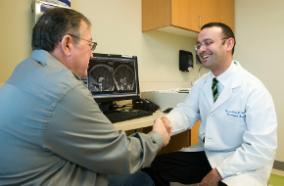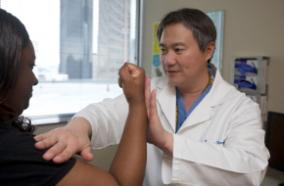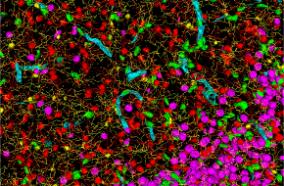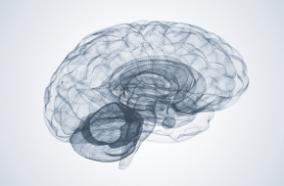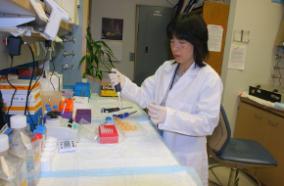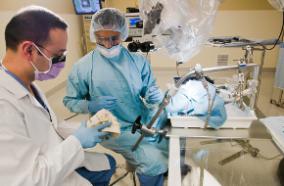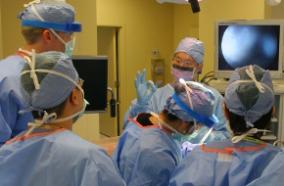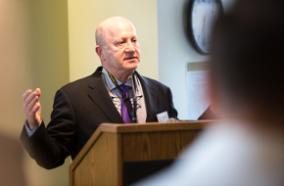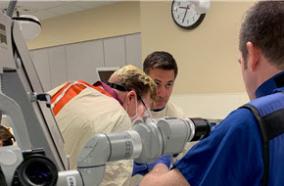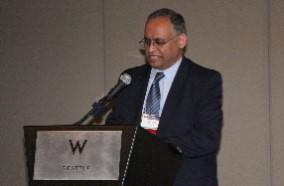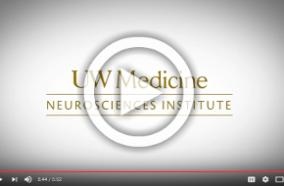4 years ago
Attention-deficit/hyperactivity disorder (ADHD) a common neurodevelopmental disorder of childhood and often comorbid with other externalizing disorders (EDs). There is evidence that externalizing behaviors share a common genetic etiology. Recently, a genome-wide, multigenerational sample linked variants in the Lphn3 gene to ADHD and other externalizing behaviors. Likewise, limited research in animal models has provided converging evidence that Lphn3 plays a role in EDs. This study examined the...
Helen J K Sable
4 years ago
Background Type 2 myocardial infarction (T2MI) is common and associated with high cardiovascular event rates. However, the relationship between T2MI and heart failure (HF) is uncertain. Methods and Results We identified patients with T2MI at a large tertiary hospital between October 2017 and May 2018. Patient characteristics, causes of T2MI, and subsequent HF hospitalizations were determined by physician chart review. We identified 359 patients with T2MI over the study period; 184 patients had a...
Cian P McCarthy
4 years ago
Klebsiella pneumoniae has been implicated in wide-ranging nosocomial outbreaks, causing severe infections without effective treatments due to antibiotic resistance. Here, we performed genome sequencing of 70 extensively drug resistant clinical isolates, collected from Brasília's hospitals (Brazil) between 2010 and 2014. The majority of strains (60 out of 70) belonged to a single clonal complex (CC), CC258, which has become distributed worldwide in the last two decades. Of these CC258 strains, 44...
Amy H Y Lee
4 years ago
Tuberous sclerosis complex (TSC) is a multisystem developmental disorder characterized by hamartomas in various organs, such as the brain, lungs, and kidneys. Epilepsy, along with autism and intellectual disability, is one of the neurologic impairments associated with TSC that has an intimate relationship with developmental outcomes and quality of life. Sustained activation of the mammalian target of rapamycin (mTOR) via TSC1 or TSC2 mutations is known to be involved in the onset of epilepsy in...
Chihiro Hisatsune
4 years ago
BACKGROUND: Inflammation contributes to unstable atherosclerotic plaque and stroke. In randomised trials in patients with coronary disease, canukinumab (an interleukin-1B antagonist) and colchicine (a tubulin inhibitor with pleiotropic anti-inflammatory effects) reduced recurrent vascular events.Hypothesis: Anti-inflammatory therapy with low-dose colchicine plus usual care will reduce recurrent vascular events in patients with non-severe, non-cardioembolic stroke and TIA compared with usual care...
Peter Kelly
4 years ago
Bordetella pertussis has been shown to encode regulatory RNAs, yet the posttranscriptional regulatory circuits on which they act remain to be fully elucidated. We generated mutants lacking the endonucleases RNase III and RNase E and assessed their individual impact on the B. pertussis transcriptome. Transcriptome sequencing (RNA-Seq) analysis showed differential expression of ∼25% of the B. pertussis transcriptome in each mutant, with only 28% overlap between data sets. Both endonucleases...
Gyles Ifill
4 years ago
The analgesic utility of opioid-based drugs is limited by the life-threatening risk of respiratory depression. Opioid-induced respiratory depression (OIRD), mediated by the μ-opioid receptor (MOR), is characterized by a pronounced decrease in the frequency and regularity of the inspiratory rhythm, which originates from the medullary preBötzinger Complex (preBötC). To unravel the cellular- and network-level consequences of MOR activation in the preBötC, MOR-expressing neurons were optogenetically...
Nathan A Baertsch
4 years ago
CONCLUSIONS: The findings suggest a need to understand sociodemographic variables and their influence on participant attrition in longitudinal TBI research. With a better understanding of these predictors, procedures can be developed to address retention of participants who are identified as being at increased risk for study drop out.
Leia Vos
4 years ago
CONCLUSIONS: Alcohol Symptom Checklists used in routine care discriminated AUD severity consistently with current definitions of AUD and performed equitably across age, sex, race, and ethnicity. Integrating symptom checklists into routine care may help inform clinical decision-making around diagnosing and managing AUD.
Kevin A Hallgren
4 years ago
Oil spills in the subarctic marine environment off the coast of Labrador, Canada, are increasingly likely due to potential oil production and increases in ship traffic in the region. To understand the microbiome response and how nutrient biostimulation promotes biodegradation of oil spills in this cold marine setting, marine sediment microcosms amended with diesel or crude oil were incubated at in situ temperature (4°C) for several weeks. Sequencing of 16S rRNA genes following these spill...
Sean M C Murphy
4 years ago
Emerging evidence suggest WHO grade III meningiomas that arise de novo as opposed to dedifferentiating from a lower grade may harbor differing prognoses. To investigate this, a single institution retrospective analysis of prospectively acquired patients between 1999 and 2018 was performed. Clinical data and radiographic parameters were reviewed to calculate progression free survival and overall survival in patients undergoing microsurgical resection. Next generation targeted sequencing of...
Jacob Ruzevick
4 years ago
Paragangliomas are extra-adrenal catecholamine-secreting neuroendocrine tumors that can present with adrenergic signs and symptoms. The urinary bladder is a rare location for a paraganglioma, and these tumors must be distinguished from other more common bladder neoplasms. In this case report, we discuss a 59 year-old woman who initially presented with tachycardia, palpitations, chest tightness, shortness of breath, and weight loss. Laboratory evaluation showed significantly elevated...
Andrew Ko
4 years ago
Latrophilins (LPHNs) are adhesion G protein-coupled receptors with three isoforms but only LPHN3 is brain specific (caudate, prefrontal cortex, dentate, amygdala, and cerebellum). Variants of LPHN3 are associated with ADHD. Null mutations of Lphn3 in rat, mouse, zebrafish, and Drosophila result in hyperactivity, but its role in learning and memory (L&M) is largely unknown. Using our Lphn3 knockout (KO) rats we examined the cognitive abilities, long-term potentiation (LTP) in CA1, NMDA receptor...
Samantha L Regan
4 years ago
This study aims to explore the psychosocial factors and challenges affecting the lives of those who wear an ocular prosthesis following a traumatic eye injury. Thematic analysis of semi-structured interviews with eight individuals resulted in five themes: emotional devastation in the aftermath; moving forward; fear of negative social evaluation; keeping it normal - protecting self and close others; and threat of injury & blindness. Enucleation or evisceration of an eye causes significant...
Joni Keys
4 years ago
No abstract
Michael D Williams
4 years ago
CONCLUSIONS: The majority of patients with moderate to severe TBI received either phenylephrine or norepinephrine as first-line agents for blood pressure support following brain injury. Initial choice of norepinephrine, compared with phenylephrine, was not associated with improved clinical or functional outcomes.
Camilo Toro
4 years ago
Mismatch repair protein deficiency occurs in 0.8-2% of pancreatic ductal adenocarcinomas and confers susceptibility to immunotherapy. Herein, we report the case of a patient with Lynch syndrome-associated, locally advanced mismatch repair protein deficiency pancreatic ductal adenocarcinomas who demonstrated a sustained response to second-line treatment with pembrolizumab, but eventually developed immune-related diabetic ketoacidosis requiring discontinuation of treatment. He has since remained...
Erica S Tsang
4 years ago
Public libraries in the United States have begun to partner with social work to address the psychosocial needs observed in patrons that are beyond the training and education of most library staff. This is a new area of inquiry with limited research available. Of the few published studies, the majority focus on staff perceptions of patrons' needs and surveys of patrons experiencing homelessness about their use of public libraries. The present study is the first to examine and compare staff...
Elizabeth A Wahler
4 years ago
Understanding mechanisms of hepatocellular damage may lead to new treatments for liver disease, and genome-wide association studies (GWAS) of alanine aminotransferase (ALT) and aspartate aminotransferase (AST) serum activities have proven useful for investigating liver biology. Here we report 100 loci associating with both enzymes, using GWAS across 411,048 subjects in the UK Biobank. The rare missense variant SLC30A10 Thr95Ile (rs188273166) associates with the largest elevation of both enzymes,...
Lucas D Ward
4 years 1 month ago
Biomaterials contact directly or indirectly with the human tissues, making it important to evaluate its cytotoxicity. This evaluation can be performed by several methods, but a high discrepancy exists between the approaches used, compromising the reproducibility and the comparison among the obtained results. In this paper, we propose a protocol to evaluate biomaterials cytotoxicity using soluble extracts, which we use for dental biomaterials. The extracts preparation is detailed, from pellets...
Anabela Baptista Paula
"university of washington"[affiliation] and neurological surge...: Latest results from PubMed
More posts about UW Neurological Surgery Recent PubMed Publications

